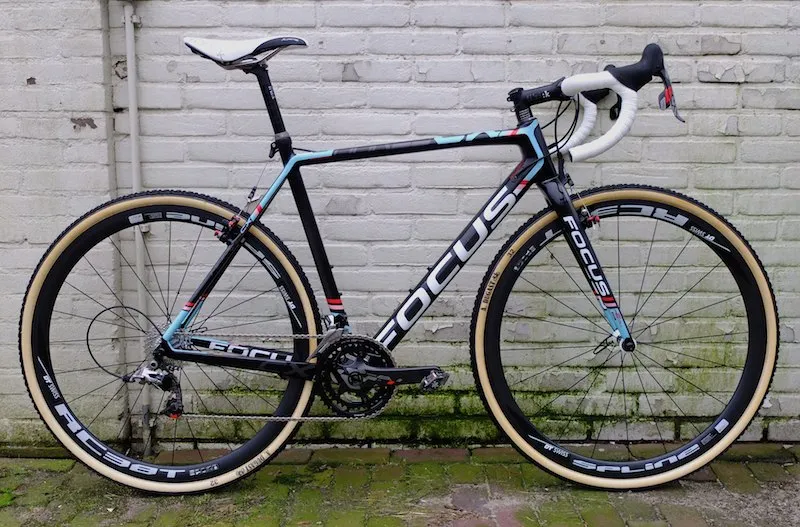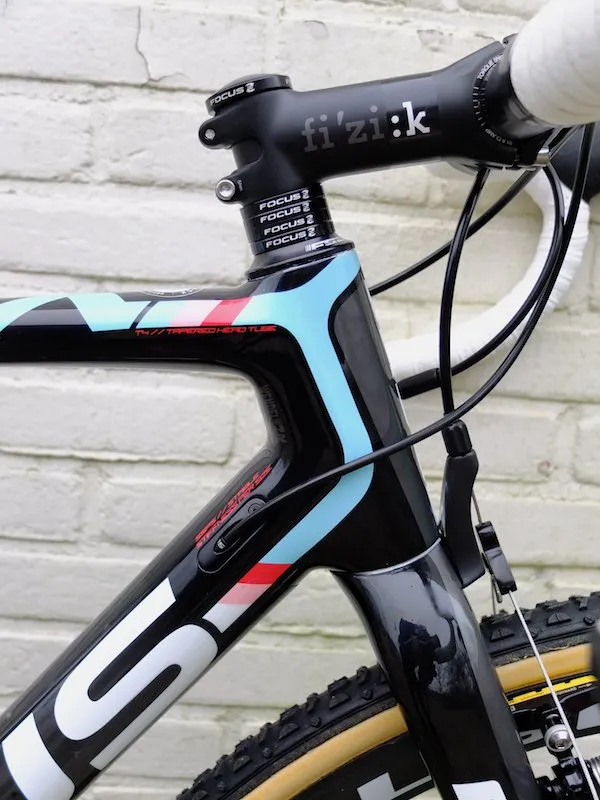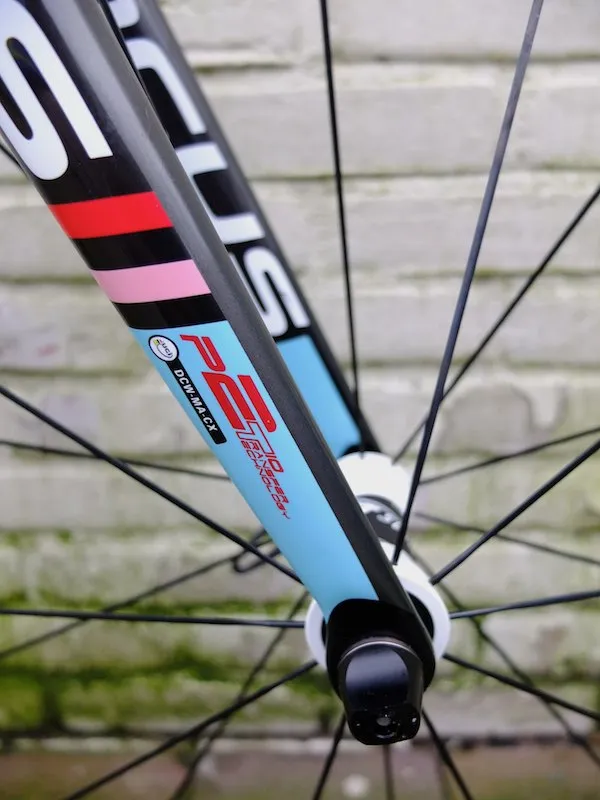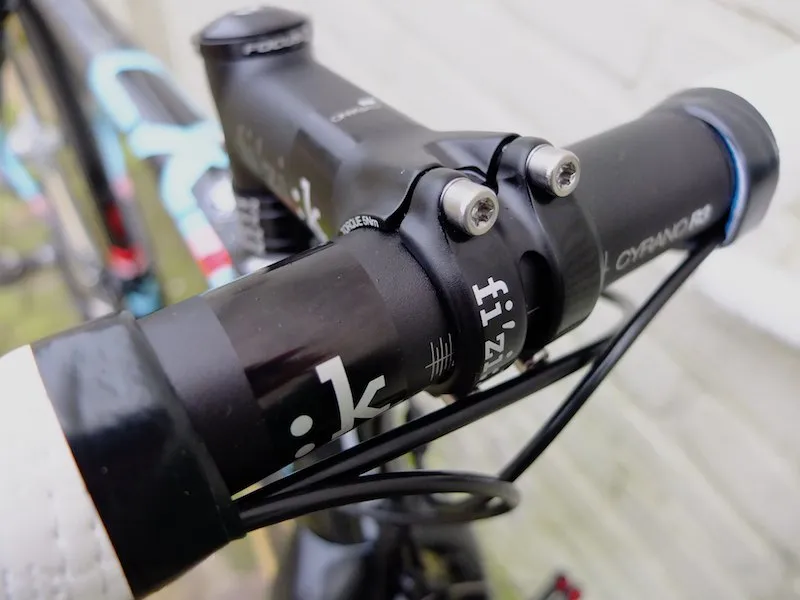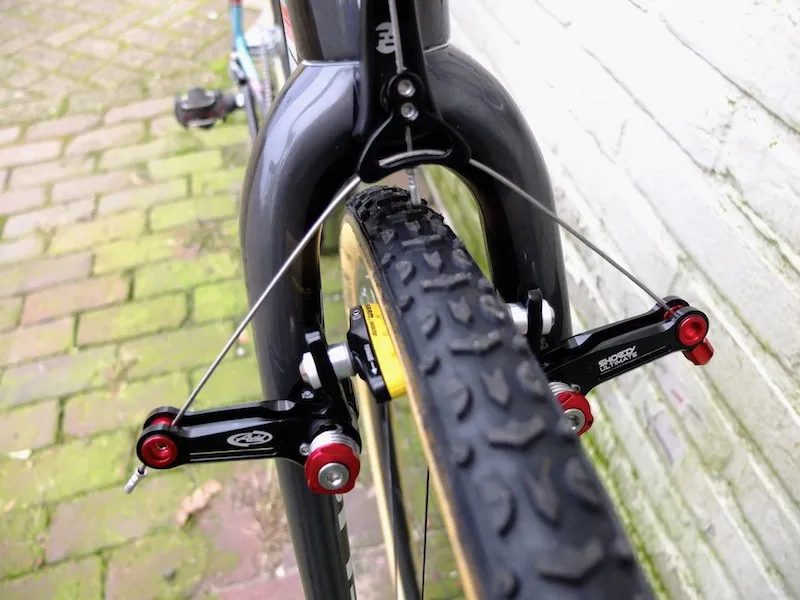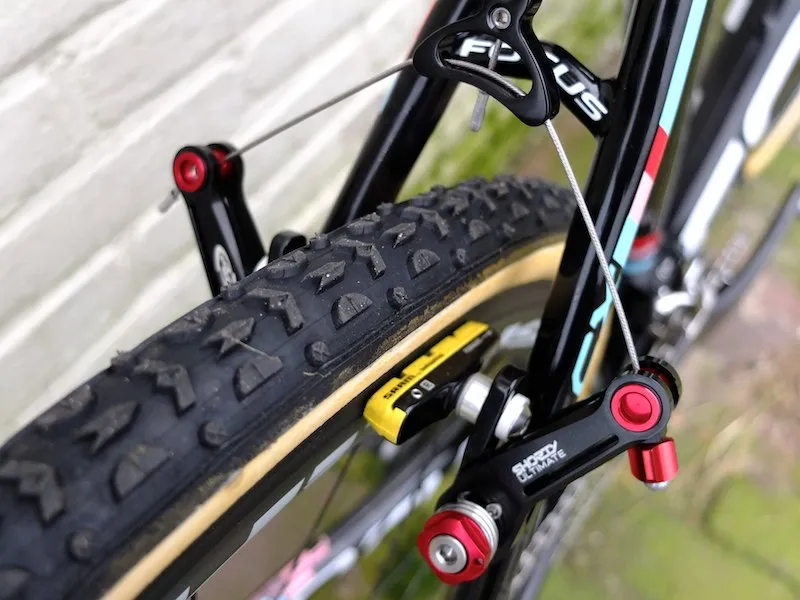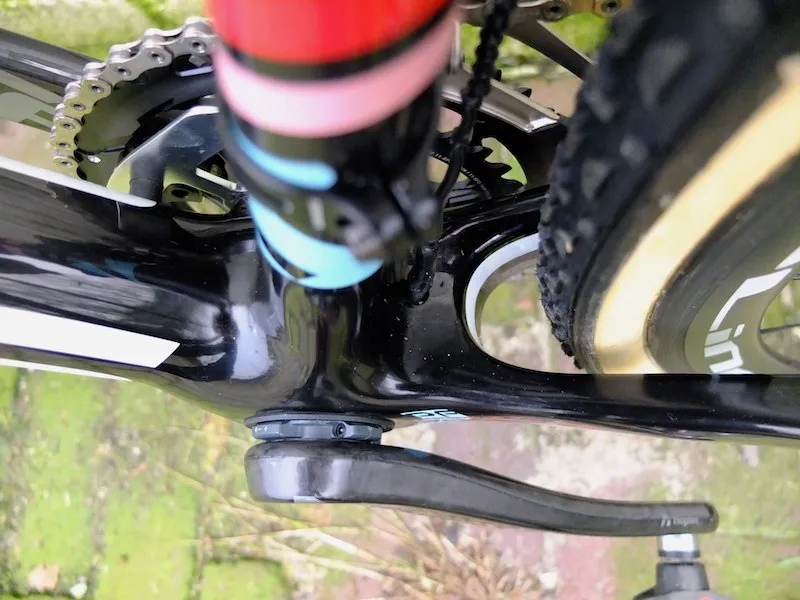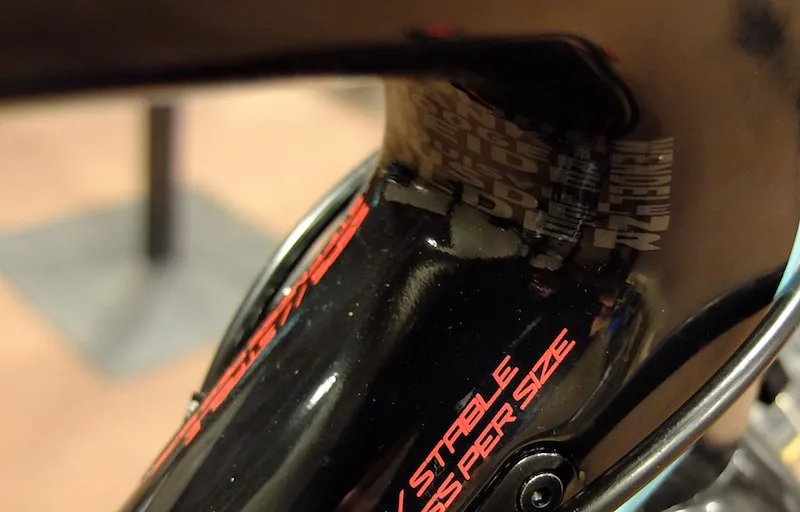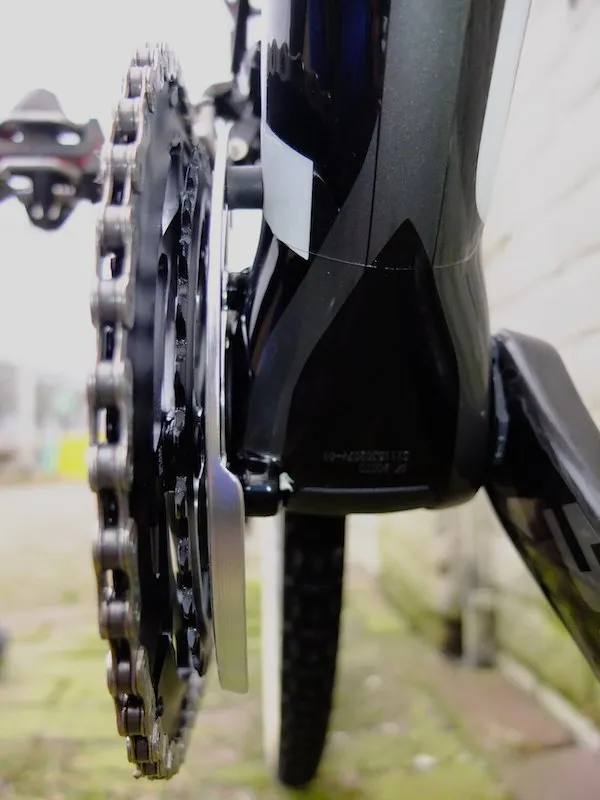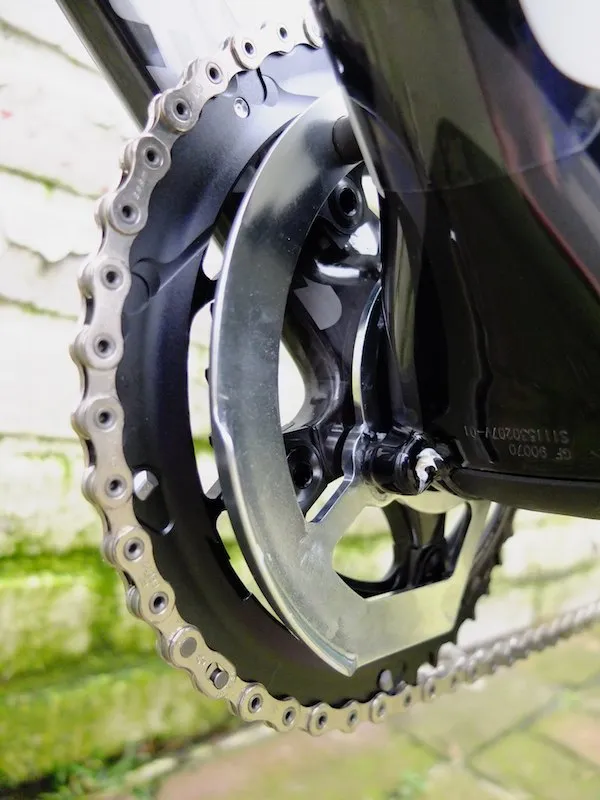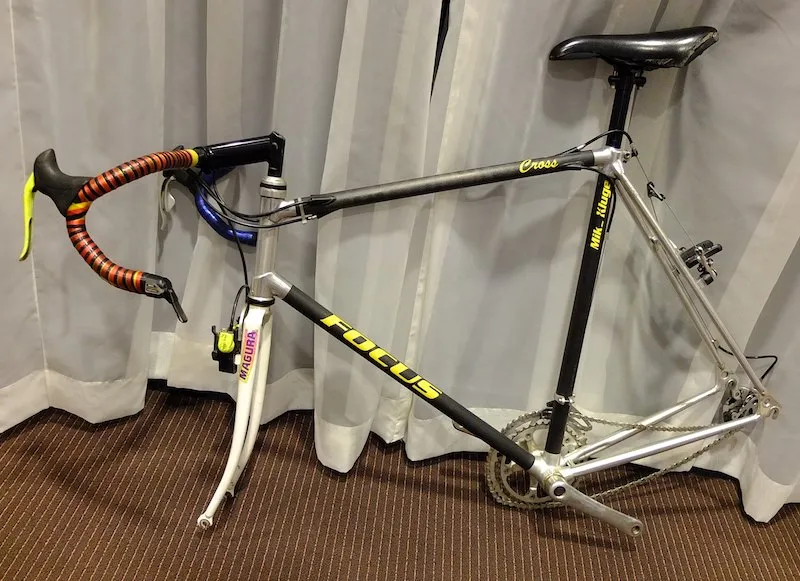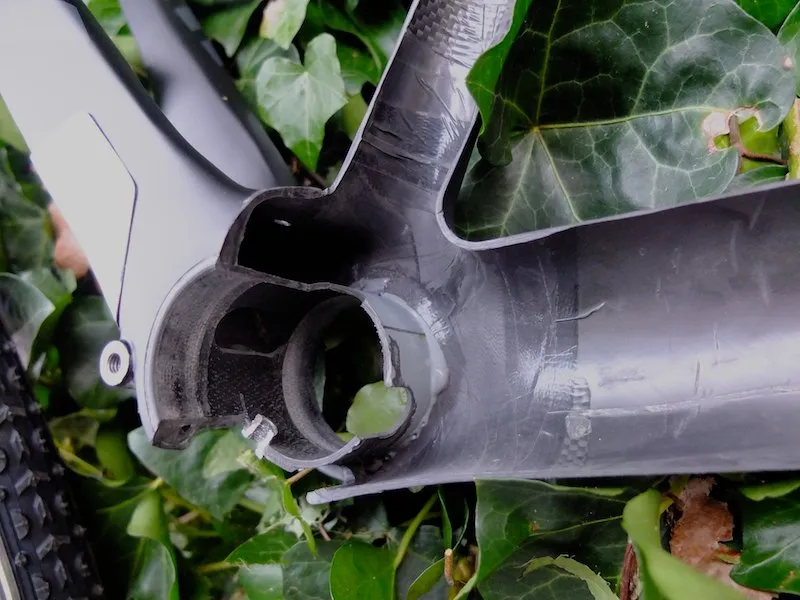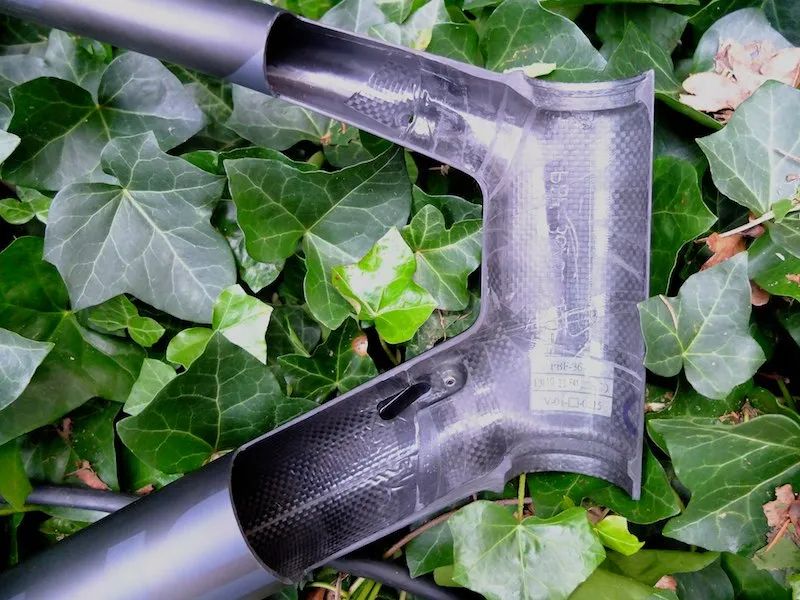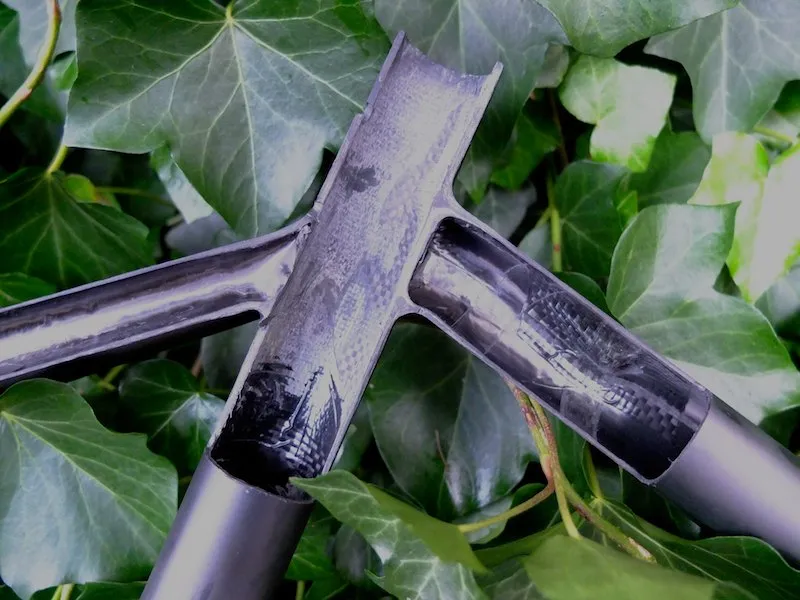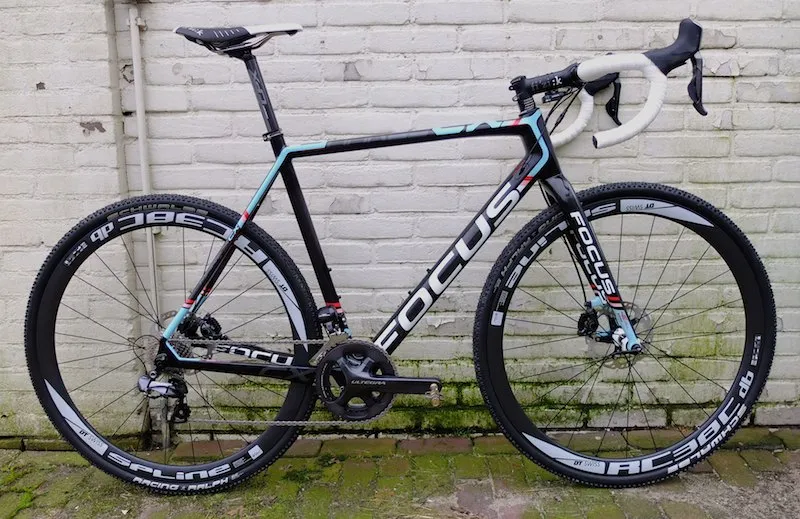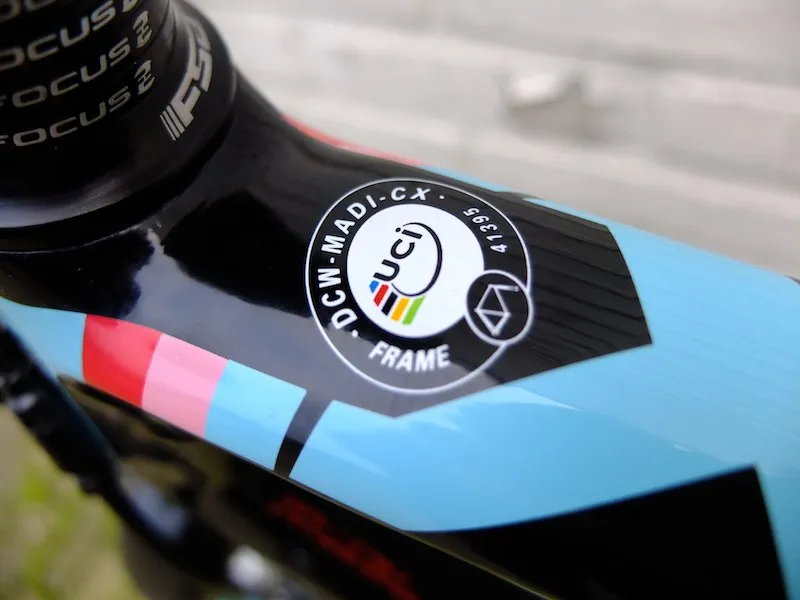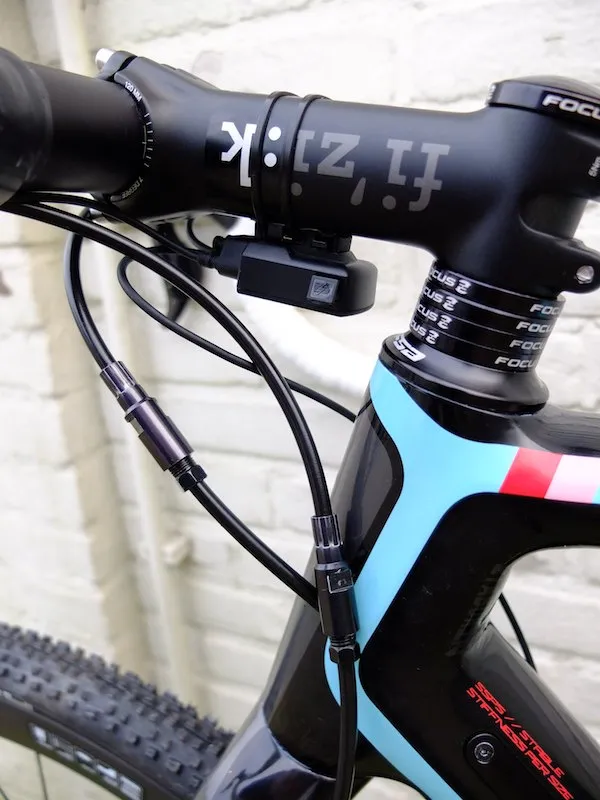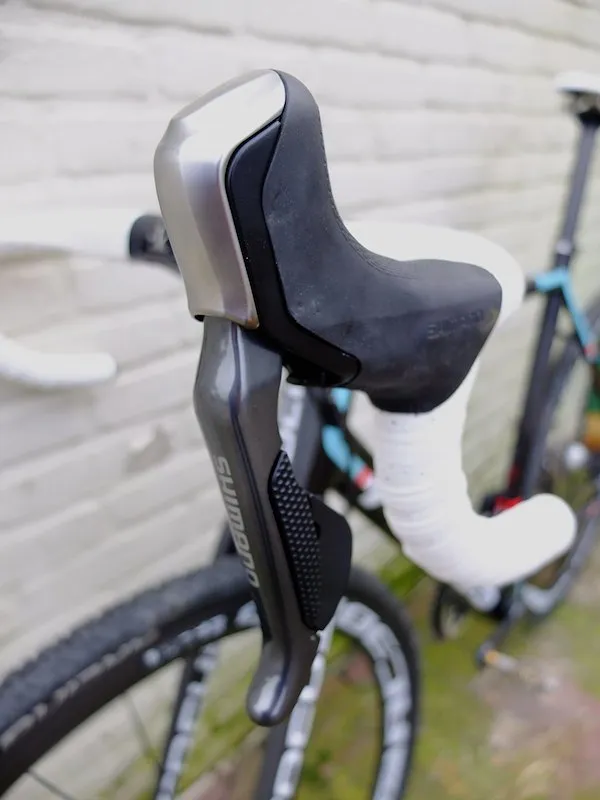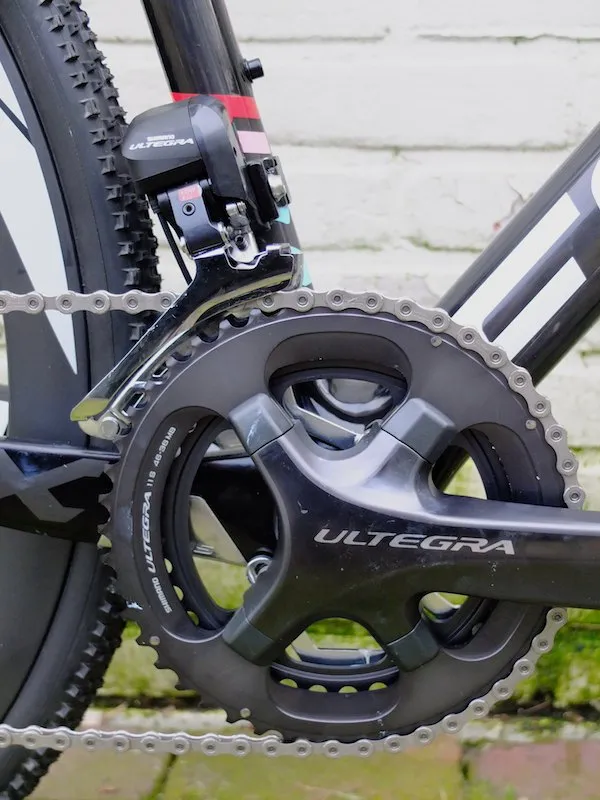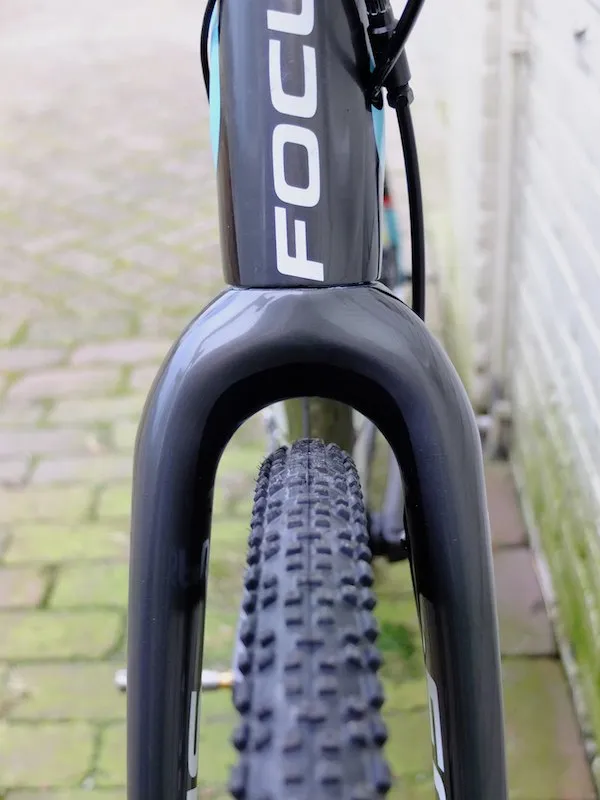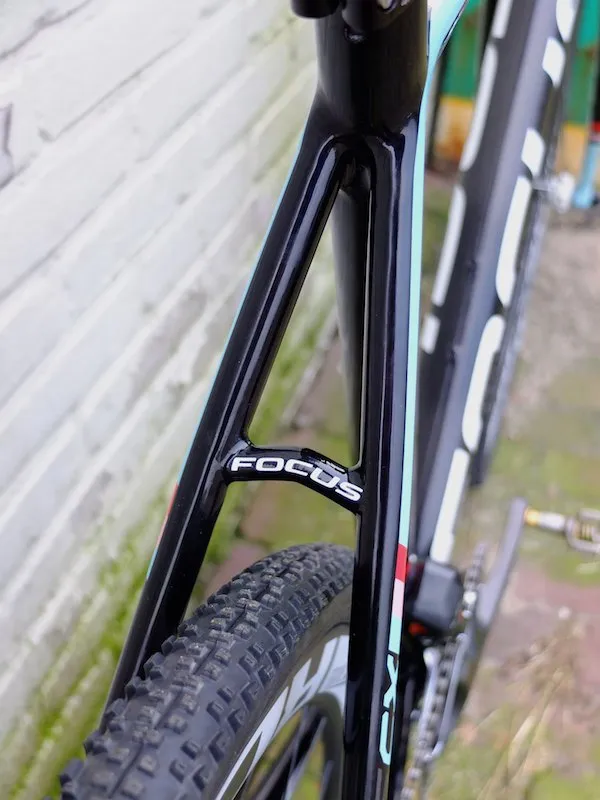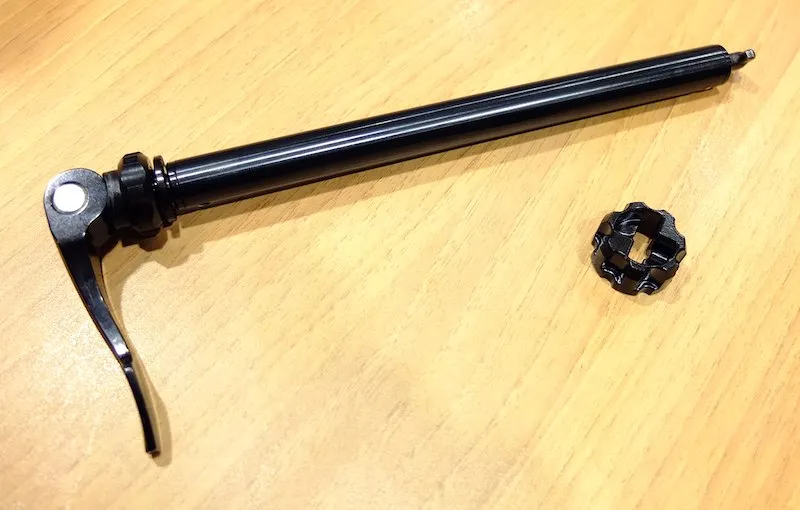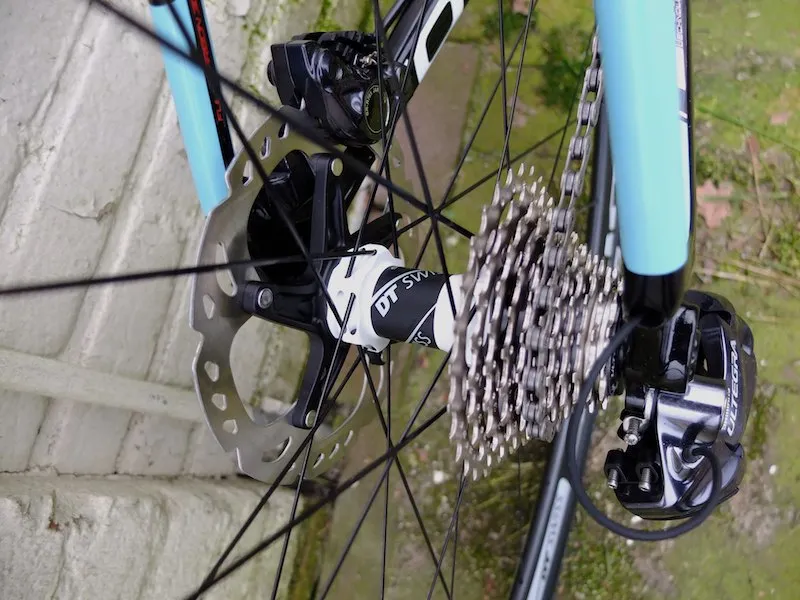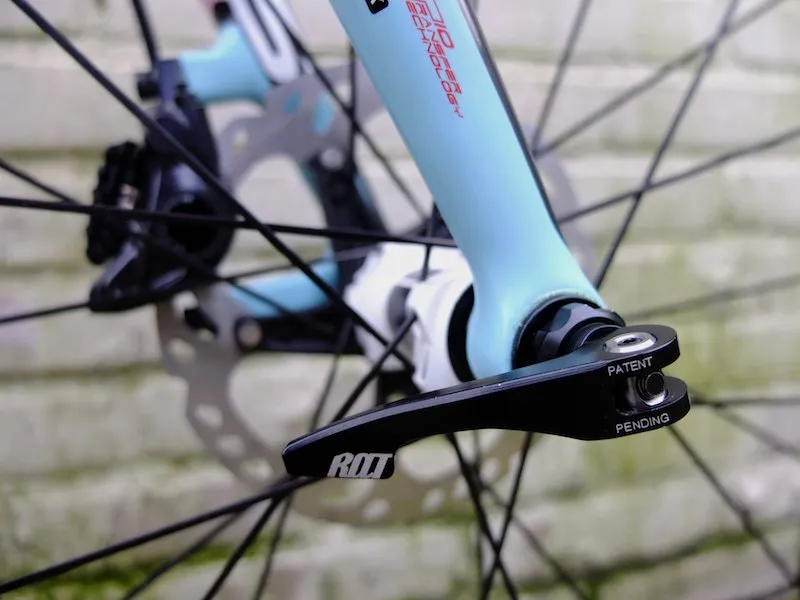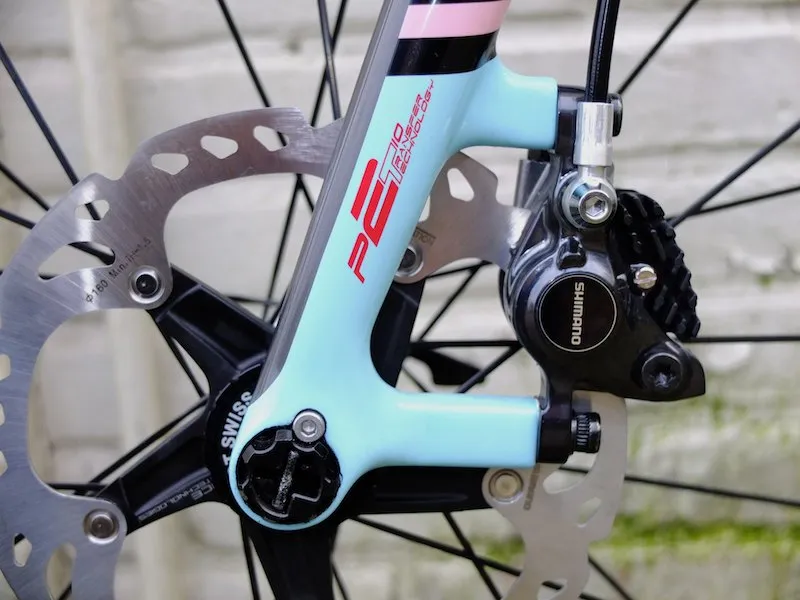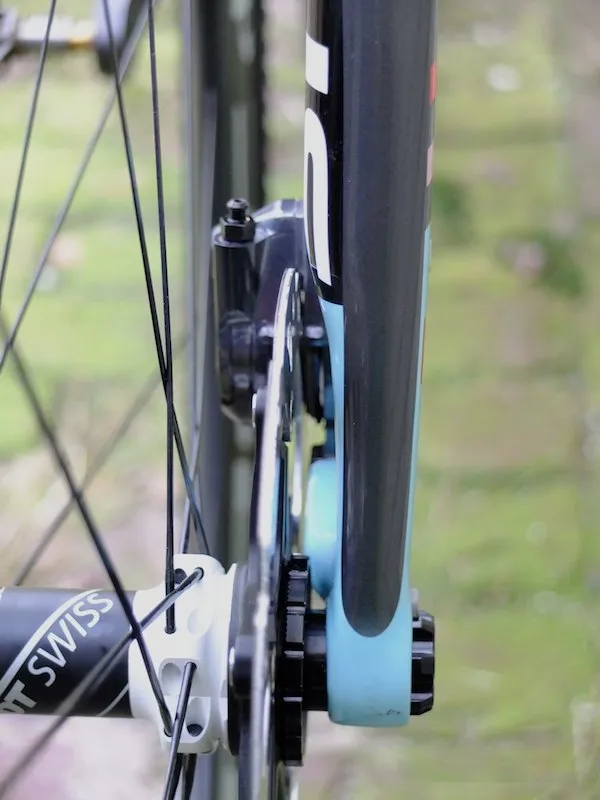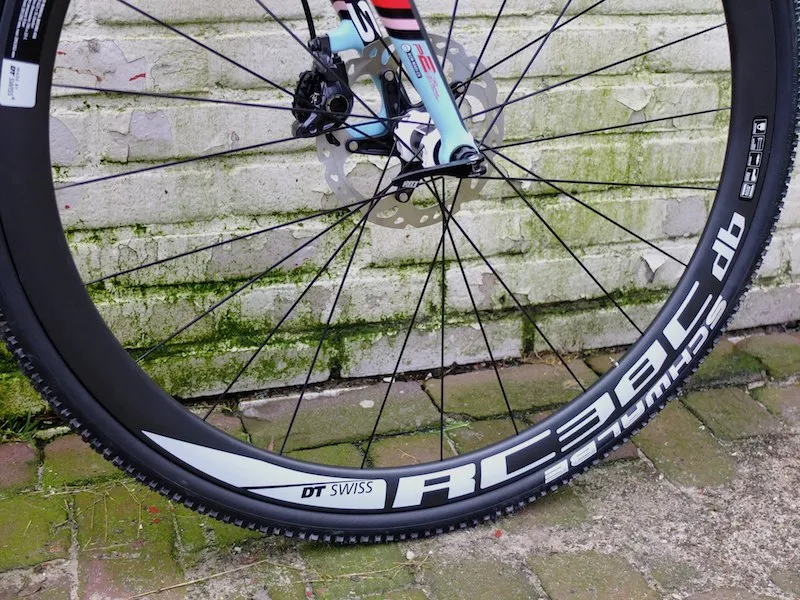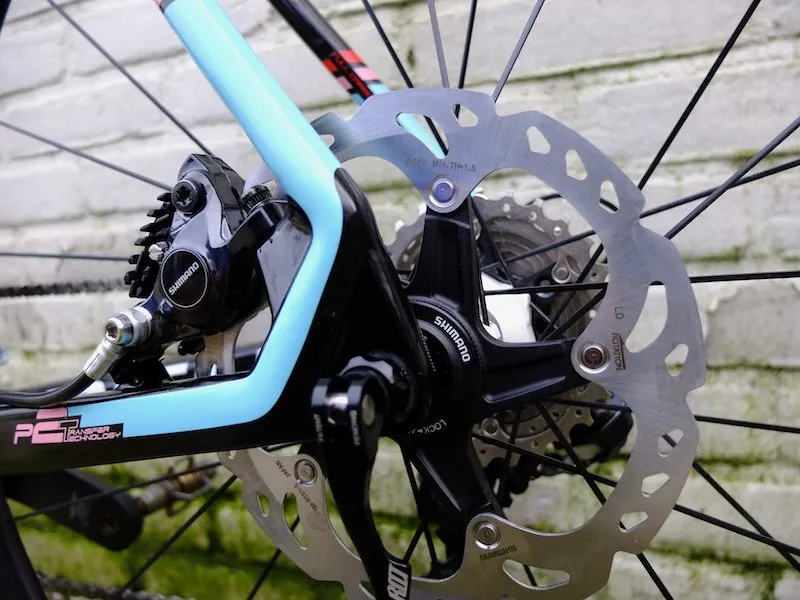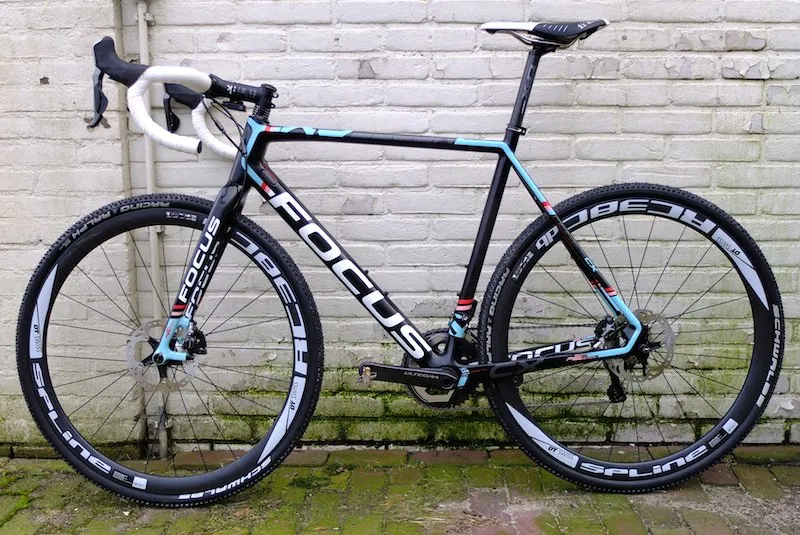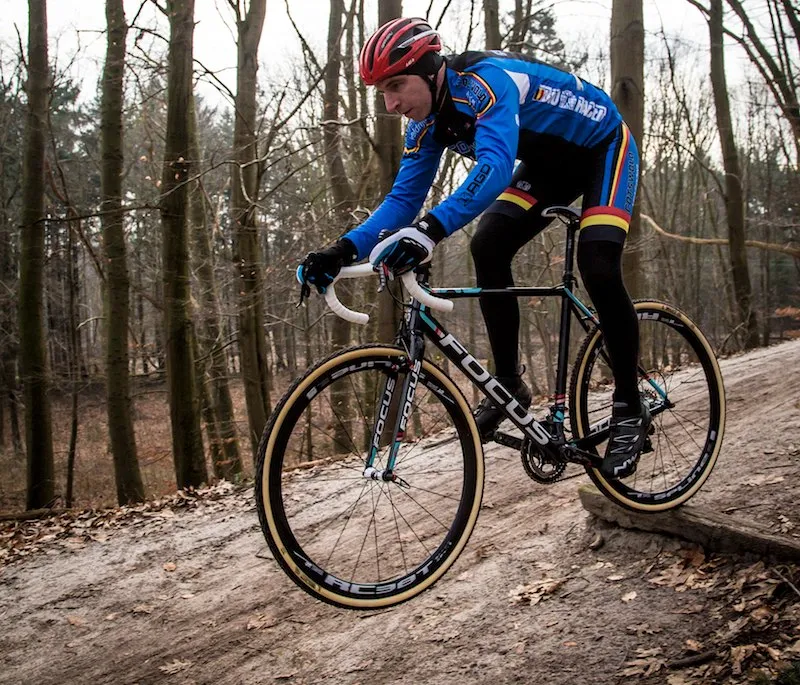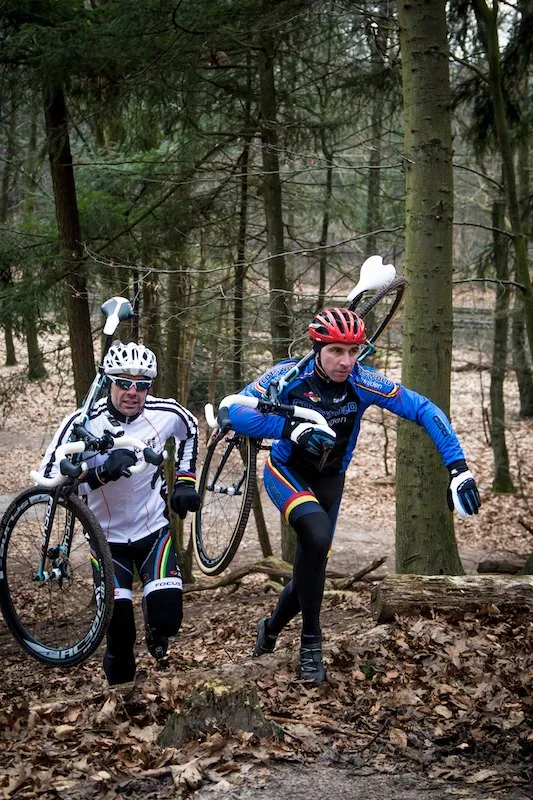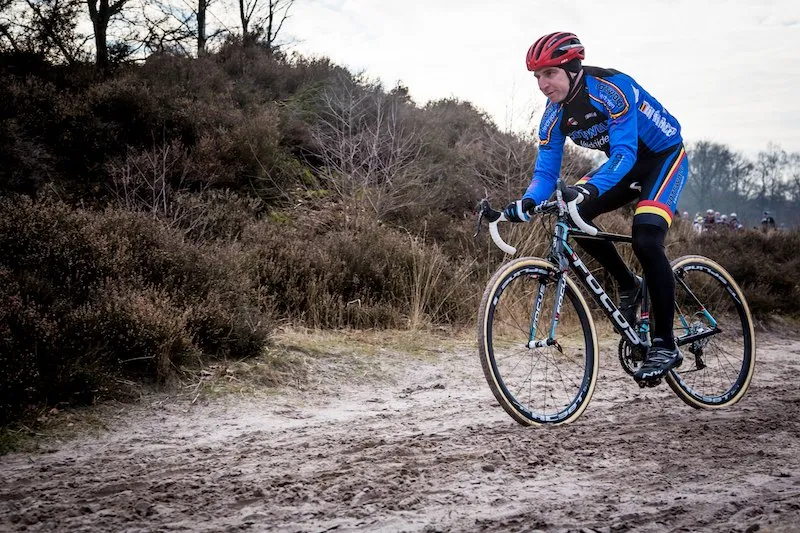Focus has officially announced the all-new Mares CX cyclocross machine we first previewed last month. As it turns out, our initial speculations were spot-on. According to Focus, this new version is far lighter, rides more comfortably, handles more nimbly, and now comes with thru-axles for the disc brake variant.
Focus hasn't just shaved a few grams from the old Mares; the new model has gone on a bona fide crash diet. Claimed weight for the cantilever version is just 895g (56cm, painted) while the disc version is barely heavier at 922g – a decrease of more than 300g. The all-new matching carbon fork adds just 418g – more than 70g lighter than before.
Focus says the new model nevertheless maintains the old version's impressive stiffness while tempering its occasionally rough ride, too. Credit goes to the more finely tuned carbon lay-up, size-specific tubing diameters, the dramatically slimmer and fully split seat stays, and slimmer blades on the revamped fork (which retains a mid-sized 1 1/8-to-1 1/4in tapered steerer).
Interestingly, Focus has integrated ISCG-05 tabs into the bottom bracket shell and will include its own CX-specific inner chain guide that should virtually guarantee against drops to the inboard side.
Focus also incorporated more conventional contemporary features into the new frame such as convertible internal cable routing, molded-in carbon fiber bearing seats on the integrated headset, a PressFit 30 bottom bracket shell, and full carbon dropouts.

Focus notably built ISCG-05 tabs into the bottom bracket shell for mounting this CX-specific chain guard
Compared to the current disc-compatible Mares CX, the new version is a more specific design with some trick new bits of its own: front and rear thru-axle dropouts with Focus-designed skewers that are actually quick to use. Unlike standard thru-axle skewers that need multiple rotations to thread in and out, Focus' Rapid Axle Technology (RAT) design uses an innovative T-pin interface that requires just a quarter-turn to engage and disengage, thus offering the security of competitors' systems but with the speed of old-school open dropouts.
Even better, Focus plans to integrate RAT into its upcoming disc road bikes.
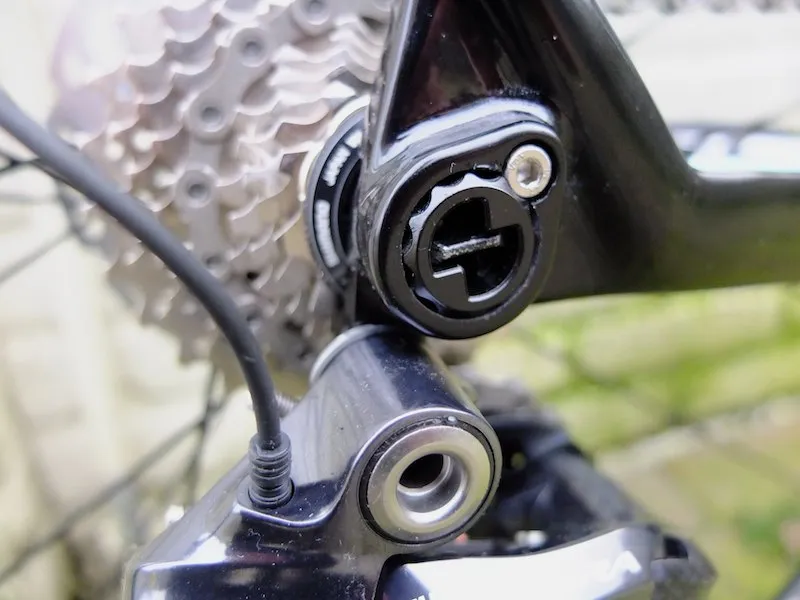
The Rapid Axle Technology (RAT) allows for quick-release speed with thru-axle stability
Standard 100x15mm and 142x12mm dimensions will allow for a wide range of compatible hubs and wheels but don't bother trying to fit 140mm rotors at either end of the new Mares CX because they won't fit. Citing studies done in conjunction with Magura on heat dissipation, Focus has opted to run 160mm rotors front and rear.
Focus has made some big changes in the Mares CX's geometry, too. While the outgoing model used a very low 70mm bottom bracket drop, the new version switches to a more middle-of-the-road 65mm figure to allow for more pedaling through corners plus extra clearance when attacking deep mud and sand. The size range also grows from four to six with additional options at either end to better suit shorter and taller riders, there's a constant 1.43 stack-to-reach ratio throughout for more consistent jumps from size to size, a constant 73.5 degree seat tube angle across the range, and the more realistic head tube lengths have grown 5-20mm depending on size. Just like the new Izalco Max road frame, the Mares CX follows Focus’s Stable Stiffness Per Size philosophy, with each frame size having a customized tube diameter and stiffness, which should better suit the rider’s build.
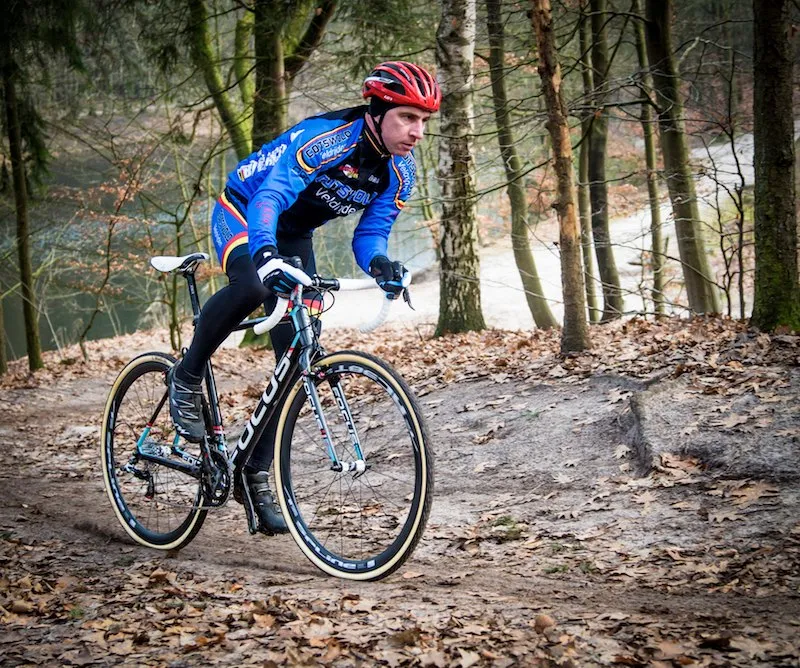
The new Mares CX was a delight to ride
The final model range is due to be released in May/June, and for now, all we know is that there will be four complete bike models, and two framesets offered – one for discs, and one for cantilevers brakes.
The first bikes are expected to start arriving in shops in July, and as yet there is no information on prices, but we’ll bring it to you when it’s released.
First ride report
With only a few pre-production disc-equipped Mares currently available, our test ride was on the cantilever model. Our 54cm Mares was kitted out with SRAM Red 22, DT Swiss RC38T wheels with 32mm Dugast Typhoon tubulars, Avid Shorty Ultimate cantilevers, aluminium Fizik bar, stem and seatpost plus a Fizik Aliante saddle. Including a pair of Time Atac pedals (290g), the complete bike weighed just 7.1kg/15.6lb.
Out of curiosity, we compared Mike Kluge’s disc version to see how it differed. As stated, the two models are only around 20 grams apart in frame weight, but Kluge’s machine was a size larger, at 56cm, and spec'ed with Shimano Ultegra Di2 and R785 hydraulic levers, with 160mm disc rotors on a pair of DT Swiss RC38C db carbon clinchers shod in Schwalbe Racing Ralph clinchers. It also had Fizik finishing kit, but a carbon seatpost, and all-up weight, including Kluge’s Crank Brothers Egg Beaters was 8.24kg/18.2lb, which considering the added weight of the disc system, Di2 battery and motors, clincher tyres and tubes, is pretty respectable. Built with top end kit, a total weight without pedals of under 7.5kg/16.5lb should be achievable.
With Focus founder Mike Kluge back in the fold and heavily involved in development and promotion, our test ride was already going to be special, but as well as the three-time cyclocross world champion, 2007 German ’cross champion, and now full-time Focus employee working on advanced carbon layup, Rene Birkenfeld joined us. And as if that wasn’t intimidating enough, 1990 World Champion Henk Baars was also there to show us how it’s done.
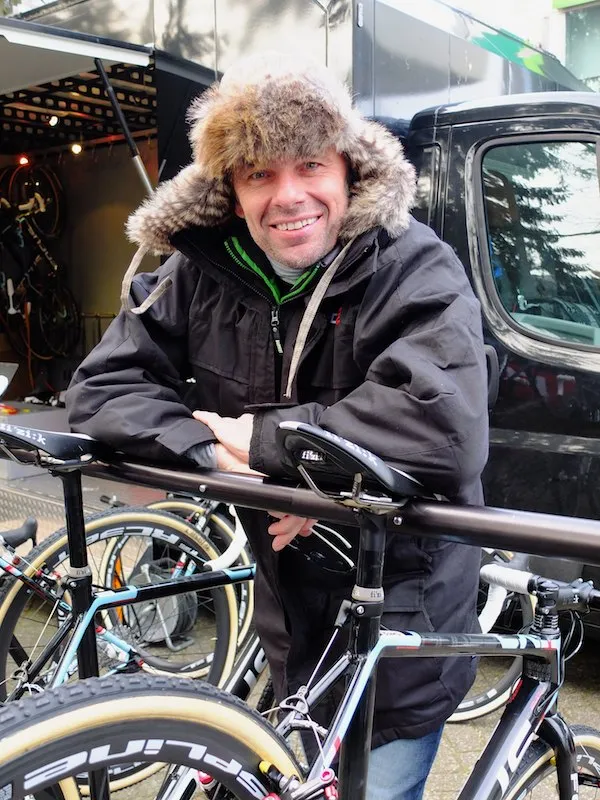
Focus founder Mike Kluge
We’d been wondering why a German bike company was launching their latest cyclo cross bike near Amsterdam, but when we set out in to the woods and common land around Hilversum, we understood. With hundreds of acres, and miles of trails comprising dirt, sand, mud and short sharp hills, the area is a cyclocrosser's paradise.
Lightweight carbon wheels and tubular tyres can flatter any bike, but the new Mares is a ground-up reworking of an already competitive bike, and the wheels here were just the icing on a very satisfying cake. The new fork is a one-piece construction, and laterally very stiff, whilst maintaining comfort by tapering more than the old model. The head tube has been stiffened too, as has the bottom bracket area, which in the real world equates to urgent acceleration and accurate steering, two of the most important factors in ‘cross, where bike control and slow speed acceleration can determine a race.
In out-of-the-saddle sprints, the Mares can take all you’ve got, relentlessly surging towards the first corner, and the solid connection between front and back gives immense confidence that the bike will go where you want. Arriving at a technical corner, the front end is stable and precise under hard braking, allowing you to take the best line on entry, before firing it out again. Mike Kluge demonstrated the frame’s potential in his own inimitable way, by leading us down a steep slope, and turning hard right before the bottom, with all of his weight on the front wheel, while the rear hung in the air, and maintaining perfect control with his front disc brake. That level of balance takes both extreme talent and a fork that resists braking dive.
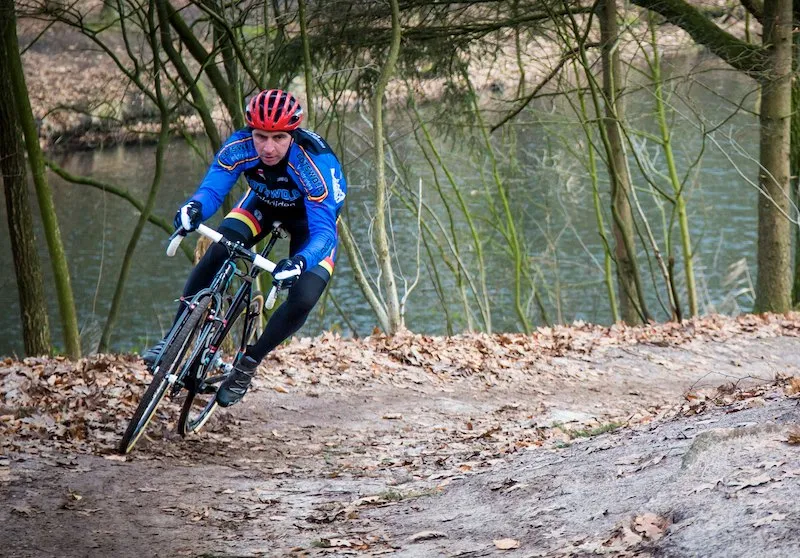
The taller head tube offers a far more usable position, requiring far fewer spacers for the average rider, which in turn aids front end solidity, and makes fine control more intuitive. At slow speeds, picking our way through rooty, uphill singletrack, we felt we had more time to change direction or lift the wheel over an obstacle, and when you want power, it’s there. The higher front end was equally beneficial when descending, as if you ride downhill in the drops – and you should – the less extreme position compared to the old Mares allows for better weight distribution, with less over the front wheel, which improves control.
The chain guard was completely unobtrusive throughout the ride, denying the chain any space inside the chainrings to jump in to. Either it worked perfectly, or all 30 of us on the test ride were very careful to avoid possible chain unshipping (we weren’t), but one thing’s for sure, there’s no disadvantage to running one, as there’s no hint of rub even under full load, it’s barely visible from most angles, and it weighs next to nothing. No doubt someone will construct a carbon version before long…
Comfort isn’t a criteria often considered highly in a cyclocross bike, as large-volume ’cross tyres at low pressures create the majority of the cushioning effect. But on long stretches of partly frozen mud churned up by equestrian traffic, the Mares was surprisingly good at soaking up the constant hits and vibration, with no noticeable loss of steering control.
The Kluge masterclass in riding long stretches of soft, deep sand in a straight line or around bends showed how useful the raised bottom bracket height is, as especially when turning a bike that’s drifting sideways in the sand, you don’t want to be catching a pedal and losing control. A couple of run-ups showed the value of the internal cable routing, saving us from grabbing a handful of cable along with the frame tubes, and definitely improving the look of the bike. The gear cables do pass beneath the bottom bracket shell, but are protected by a bolt-on cover to keep the elements out. We can’t comment on the long-term performance of this, but it should be a good thing.
After almost three hours of blasting around the test playground, we were still keen to continue. The cantilever Mares CX is one of the most accomplished modern cyclocross bike we’ve tested so far, and a very worthwhile replacement of the old Mares platform. We’ll swing our leg over a disc-equipped version later in the year, and expect it to be at least as exciting.
